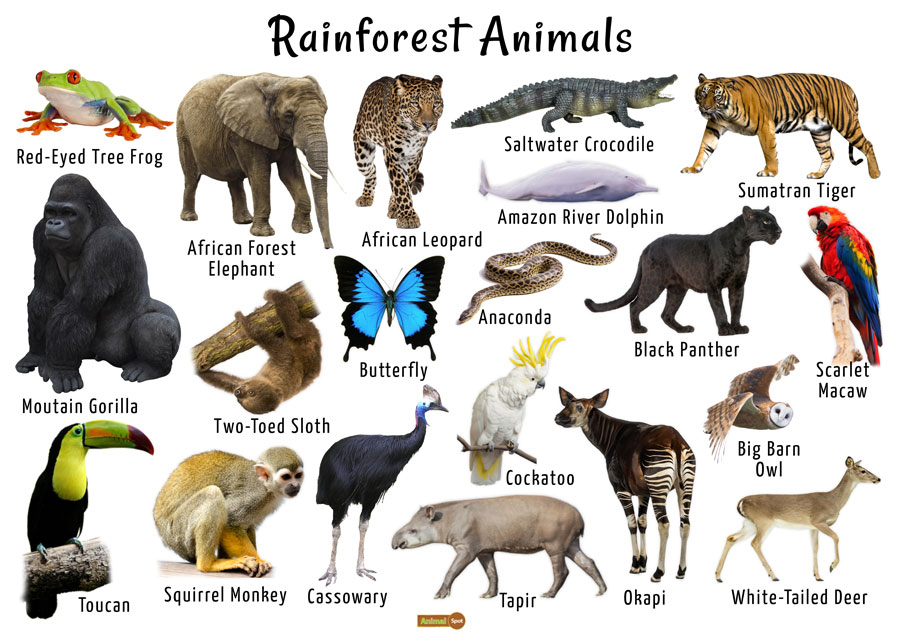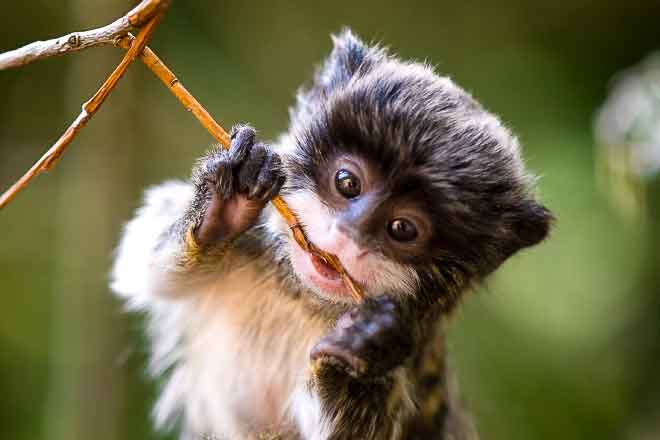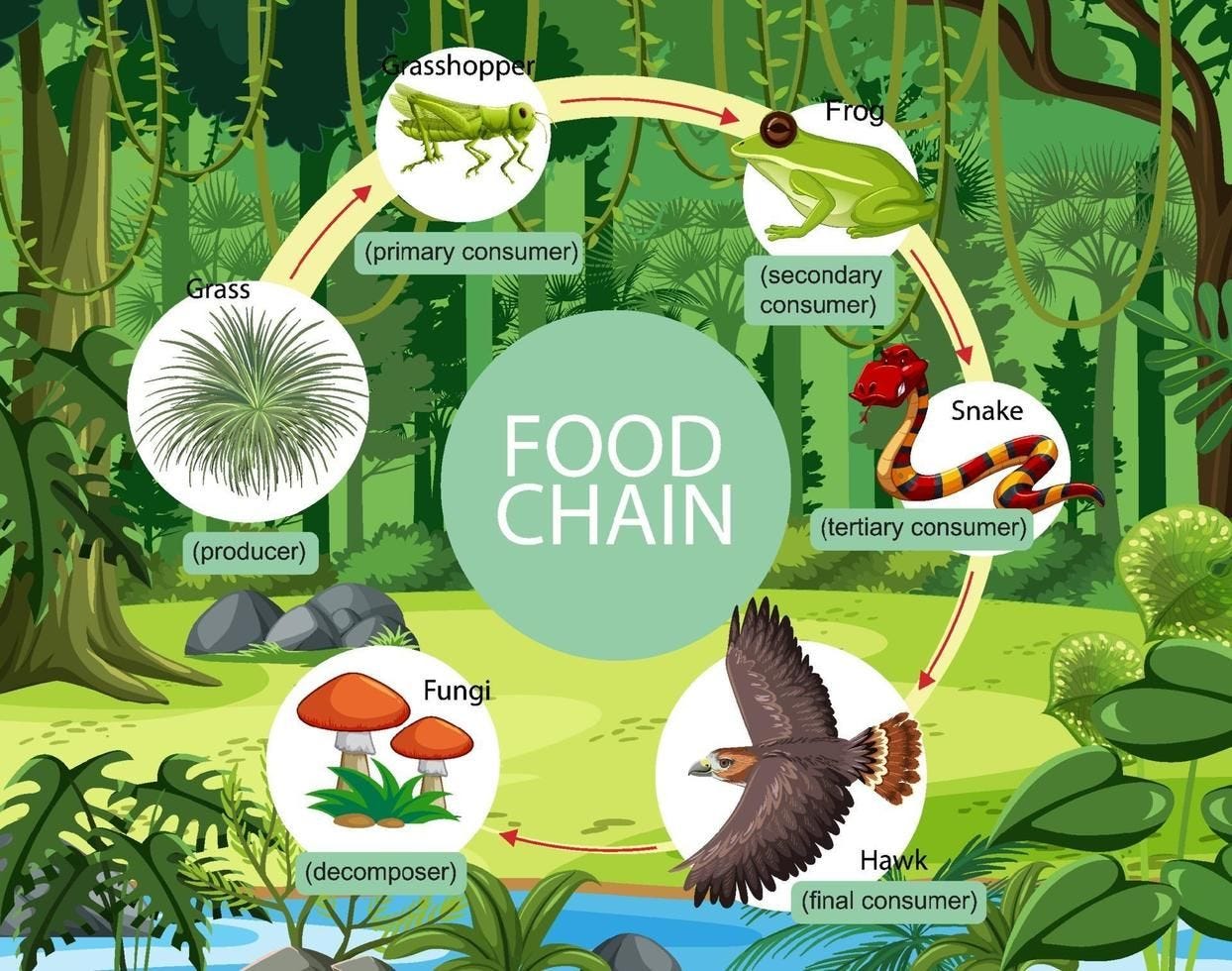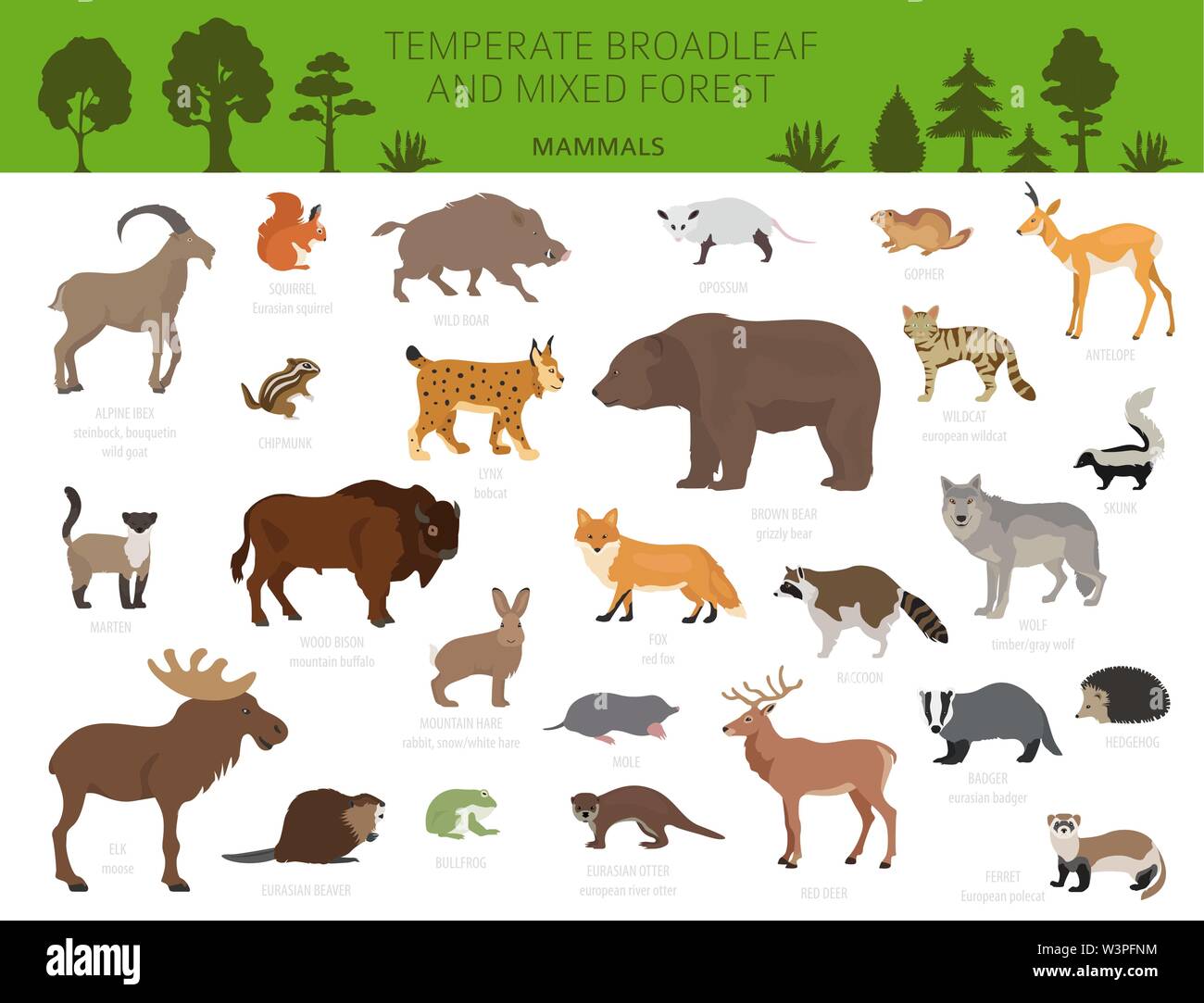Topic animals in a rainforest ecosystem: Explore the vibrant world of animals in a rainforest ecosystem, where diversity thrives and nature"s wonders unfold in the heart of lush landscapes.
Table of Content
- What kind of animals live in a rainforest ecosystem?
- Overview of Rainforest Ecosystems
- Diversity of Animals in Rainforests
- Key Animal Species
- Adaptations to Rainforest Life
- Threats to Rainforest Animals
- Conservation Efforts
- YOUTUBE: Rainforests 101
- Interconnectedness of Rainforest Species
- Unique Behaviors and Traits
- Role of Animals in Rainforest Ecosystems
- Impact of Climate Change
What kind of animals live in a rainforest ecosystem?
Animals in a rainforest ecosystem are incredibly diverse and unique. Here is a list of some of the amazing creatures that can be found in these ecosystems:
- Monkeys - Rainforests are home to various species of monkeys, including howler monkeys, spider monkeys, and capuchin monkeys.
- Parrots - Colorful parrots like the scarlet macaw are commonly found in rainforests.
- Sloths - These slow-moving creatures are well adapted to the rainforest canopy.
- Toucans - Known for their large and colorful beaks, toucans can be spotted in rainforest canopies.
- Jaguars - Rainforests provide habitat for the elusive and powerful jaguars, the largest feline species in the Americas.
- Tree Frogs - Rainforest tree frogs are known for their vibrant colors and unique adaptations for life in the canopy.
- Snakes - Various snake species, including the green anaconda and boa constrictor, inhabit rainforest environments.
- Butterflies - With a multitude of species, rainforests are a haven for butterflies of different shapes, sizes, and colors.
- Anteaters - These specialized mammals feast on ants and termites, which are abundant in rainforests.
- Tapirs - These large herbivores are often found near water sources in rainforest ecosystems.
These animals, along with countless others, contribute to the intricate web of life within the rainforest ecosystem. The unique adaptations of these creatures allow them to thrive in a specialized habitat filled with abundant biodiversity.
READ MORE:
Overview of Rainforest Ecosystems
Rainforest ecosystems are among the Earth"s oldest living ecosystems, flourishing with an unparalleled diversity of life. These vibrant ecosystems are found in tropical regions around the globe, from the Amazon Basin in South America to the Congo Basin in Africa, and Southeast Asia"s archipelagos. Rainforests are characterized by high annual rainfall, dense canopy layers, and a warm climate year-round.
- Biodiversity: Rainforests are home to more than half of the world"s plant and animal species, despite covering less than 10% of the Earth"s surface.
- Climate Regulation: They play a crucial role in regulating global climate patterns by absorbing vast amounts of carbon dioxide.
- Medicinal Resources: A significant portion of natural medicines has been discovered in these ecosystems, highlighting their importance in healthcare and pharmaceuticals.
- Layers of Life: The structure of a rainforest is divided into distinct layers, each hosting unique species adapted to their specific environment.
Rainforests are not just treasure troves of biodiversity; they are essential for the survival of our planet. They provide key ecosystem services including oxygen production, soil conservation, and water cycle regulation, making their preservation a priority for global environmental sustainability.

Diversity of Animals in Rainforests
The rainforest ecosystem is a bustling metropolis of biodiversity, hosting an astonishing array of animals that vary from the tiny, industrious ants to the majestic jaguars. This incredible variety is due to the dense, rich, and stable environment provided by rainforests, which remain relatively unchanged by seasonal weather variations.
- Insects: The foundation of the rainforest food web, insects like butterflies, beetles, and bees, play crucial roles in pollination and as a food source for other animals.
- Amphibians: Home to vividly colored frogs and salamanders, rainforests provide the moist environment these animals need to thrive.
- Reptiles: From the forest floor to the canopy, reptiles such as snakes, lizards, and turtles are well-adapted to life in the rainforest.
- Birds: The rainforest canopy is alive with birds, from the iconic toucan to the elusive harpy eagle, each adapted to life in the trees.
- Mammals: Rainforests are home to a diverse group of mammals, including primates like gorillas and orangutans, predators like jaguars and leopards, and unique species like sloths and tapirs.
Each layer of the rainforest, from the forest floor to the emergent layer high above, supports different communities of animals, adapted to their specific niches. This stratification, along with the constant availability of food and shelter, makes rainforests among the most life-sustaining habitats on the planet.
Key Animal Species
The rainforest is a haven for countless species, many of which play critical roles in their ecosystems. Among these, certain key species stand out for their ecological importance, unique adaptations, and, unfortunately, in some cases, their vulnerable status. Here"s a look at some of these pivotal creatures:
- Jaguar: As top predators, jaguars help maintain the health of the rainforest by controlling other species" populations. Their strength and stealth make them one of the rainforest"s most revered animals.
- Orangutan: Often called the "gardeners" of the forest, orangutans play a significant role in seed dispersal, aiding in the growth of the forest vegetation that forms their habitat.
- Harpy Eagle: With the largest talons of any living eagle, the harpy eagle is a formidable predator in the rainforest canopy, preying on medium-sized mammals and birds.
- Amazon River Dolphin: Also known as the pink dolphin, this species is an indicator of the health of freshwater ecosystems within the Amazon rainforest.
- Sloth: Sloths are crucial for the rainforest ecosystem as they assist in nutrient recycling through their slow digestion process. Their movement through the canopy also aids in the dispersal of seeds and algae.
- Poison Dart Frog: Known for their vivid colors and potent toxins, these frogs contribute to local biodiversity and have a significant place in indigenous cultures for their use in hunting.
These key species are just a glimpse into the rich tapestry of life in the rainforest. Each plays a unique part in their ecosystem"s balance, demonstrating the interconnectedness of rainforest life.

Adaptations to Rainforest Life
Animals in rainforest ecosystems exhibit a fascinating array of adaptations that allow them to thrive in such a dense, competitive, and complex environment. These adaptations range from physical characteristics to behavioral traits, each enabling survival in the unique conditions of the rainforest.
- Camouflage: Many species, such as the leaf-tailed gecko, have developed incredible camouflage to blend into the lush foliage, avoiding predators and ambushing prey.
- Arboreal Lifestyle: The dense canopy of rainforests is home to animals like the spider monkey and sloths, which have adapted to life in the trees with prehensile tails and limbs for gripping branches.
- Nocturnal Habits: To avoid daytime predators and competition, numerous rainforest animals are nocturnal, including the aye-aye, which uses its long finger to extract insects from bark.
- Poisonous Defenses: Frogs such as the poison dart frog possess toxic skin to deter predators, a vivid example of chemical defense.
- Nutrient Utilization: Decomposers like termites play a critical role in breaking down dead organic matter, recycling nutrients back into the ecosystem.
- Sensory Adaptations: Bats and some species of birds have developed echolocation or enhanced hearing to navigate and hunt in the dense forest where visibility is limited.
These adaptations are the result of millions of years of evolution, driven by the need to survive, reproduce, and compete for resources in one of the most biologically diverse habitats on Earth.
Threats to Rainforest Animals
Rainforest animals face a myriad of threats that jeopardize their survival and the ecological balance of their habitats. These threats stem from both natural and human-induced changes, with the latter being significantly more destructive in recent decades.
- Deforestation: The clearing of rainforest land for agriculture, logging, and urban development is the most significant threat, leading to habitat loss and fragmentation.
- Climate Change: Global warming affects rainfall patterns, temperatures, and ecosystems, making it harder for rainforest species to survive.
- Pollution: Water and soil pollution from mining and agricultural runoff can poison animals and destroy food sources.
- Illegal Wildlife Trade: The poaching and capturing of rainforest animals for pets, medicine, and souvenirs reduce their populations and disrupt ecological balance.
- Invasive Species: Non-native plants and animals introduced by human activity can outcompete, prey on, or bring diseases to native species.
- Overhunting and Overfishing: Unsustainable hunting and fishing practices deplete species faster than they can reproduce, leading to population crashes.
Addressing these threats requires global cooperation and sustainable practices to ensure rainforests and their inhabitants continue to thrive for generations to come.

Conservation Efforts
Preserving the rich biodiversity and ecological functions of rainforests is crucial for the health of our planet. Conservation efforts are diverse and involve international cooperation, local initiatives, and the participation of indigenous communities. These efforts aim to protect rainforest habitats, ensure sustainable management of resources, and safeguard the future of the countless species that call these ecosystems home.
- Protected Areas: Establishing national parks and reserves to protect significant tracts of rainforest from deforestation and development.
- Community Forest Management: Empowering local communities to manage forests sustainably, recognizing their dependency on these ecosystems for livelihoods and cultural values.
- Wildlife Corridors: Creating corridors to connect fragmented habitats, allowing animals to move freely and maintain genetic diversity.
- Reforestation Projects: Planting trees to restore degraded areas of rainforest, helping to rebuild habitats and increase forest cover.
- Legislation and Enforcement: Implementing and enforcing laws to combat illegal logging, wildlife trade, and other activities that threaten rainforest ecosystems.
- Eco-tourism: Promoting responsible tourism that supports conservation efforts and provides economic benefits to local communities without harming the environment.
- Research and Education: Supporting scientific research to better understand rainforest ecosystems and educating the public on the importance of conservation.
These conservation efforts require the collaboration of governments, non-profits, businesses, and individuals. Through concerted action, it is possible to protect these vital ecosystems for future generations.
Rainforests 101
Immerse yourself in the enchanting beauty of the rainforest and witness nature at its finest. Explore the lush greenery, vibrant wildlife, and breathtaking waterfalls in this awe-inspiring video that will transport you to a world of serenity and wonder.
Animals of the Rainforest
Step into the wild and discover the incredible world of animals that inhabit our planet. From the majestic lions roaming the African savannah to the cute and playful dolphins of the ocean, this captivating video showcases the diversity and fascinating behaviors of these magnificent creatures. Don\'t miss the chance to witness these extraordinary animals in their natural habitats.
Interconnectedness of Rainforest Species
The complex web of life within rainforest ecosystems exemplifies the deep interconnectedness between species, highlighting the dependence of various organisms on one another for survival. This symbiotic relationship ensures the stability and resilience of the ecosystem, promoting biodiversity and ecological balance.
- Pollination and Seed Dispersal: Birds, bats, and insects play crucial roles in pollinating flowers and dispersing seeds, aiding in forest regeneration and the spread of plant species.
- Food Chains: The rainforest food web showcases a detailed interaction among producers, consumers, and decomposers, ensuring energy flow and nutrient cycling within the ecosystem.
- Mutualism: Many species engage in mutualistic relationships, like the partnership between certain tree species and the fungi that colonize their roots, enhancing nutrient absorption.
- Predator-Prey Dynamics: Predators regulate the population of prey species, preventing overpopulation and the resultant strain on resources, thus maintaining ecological balance.
- Habitat Creation: Larger animals such as elephants create paths in dense forest undergrowth, which serve as vital passageways for smaller animals.
This intricate network of interactions among rainforest species underpins the ecosystem"s health and productivity. The loss of even a single species can have cascading effects, underscoring the importance of conserving every element of these biodiverse habitats.

Unique Behaviors and Traits
Rainforest ecosystems are renowned for their extraordinary biodiversity, which includes a wide array of animals exhibiting unique behaviors and traits. These special adaptations not only allow them to survive but also to thrive in the competitive rainforest environment.
- Mimicry: Some species, like the Amazonian butterfly, have evolved to mimic the appearance of other, more dangerous species to deter predators.
- Communication: Creatures such as howler monkeys use loud calls to communicate across the dense forest, establishing territory and warning of predators.
- Nocturnal Activity: Many rainforest animals, including the night monkey, are nocturnal, adapted to be active at night to avoid daytime predators and heat.
- Aquatic Adaptations: The Amazon river dolphin has developed a flexible neck and echolocation to navigate and hunt in murky waters.
- Camouflage: The leaf-tailed gecko uses its body shape and color to blend seamlessly into its surroundings, making it nearly invisible to both predators and prey.
- Arboreal Adaptations: Tree-dwelling species like the orangutan have strong arms and grippy hands to swing between trees, while others develop suction cups or hooks on their feet for climbing.
These behaviors and traits are the result of millennia of evolution, finely tuning each species to its specific niche within the rainforest. This incredible adaptability is a testament to the complexity and resilience of rainforest ecosystems.
Role of Animals in Rainforest Ecosystems
Rainforest ecosystems are characterized by their incredible biodiversity, and animals play a crucial role in maintaining the balance and health of these environments. From pollination and seed dispersion to controlling pest populations and contributing to nutrient cycling, animals are integral to rainforest ecosystems.
- Pollinators: Many rainforest plants rely on animals for pollination. Birds, bats, and insects such as bees and butterflies visit flowers to feed on nectar, inadvertently transferring pollen from one flower to another and facilitating plant reproduction.
- Seed Dispersers: Animals such as fruit bats, birds, monkeys, and even fish consume fruits and help in dispersing seeds through their droppings. This is crucial for the propagation of many tree species, ensuring forest regeneration and diversity.
- Predators: Predatory animals, including jaguars, snakes, and birds of prey, help regulate the populations of other species, preventing any one group from becoming too dominant. This control mechanism supports biodiversity by allowing a wider range of species to flourish.
- Decomposers: Many smaller animals and insects act as decomposers, breaking down dead plant and animal matter. This process recycles nutrients back into the soil, where they can be used by plants, thus supporting the growth of new vegetation.
- Nutrient Cycling: Larger animals, such as elephants and tapirs, contribute to nutrient cycling by moving large distances and depositing feces, which enrich the soil in different parts of the forest.
In addition to these roles, animals also contribute to the rainforest"s resilience against changes and disturbances. For instance, the presence of a diverse range of species can help ecosystems recover more quickly from natural disasters like storms and fires. Furthermore, through their daily activities, animals create and maintain habitats that are crucial for other species, demonstrating the interconnectedness of rainforest ecosystems.
Overall, the role of animals in rainforest ecosystems is multifaceted and vital for the sustainability of these complex environments. Their contributions underscore the importance of conserving rainforest habitats to preserve the balance of life on Earth.

READ MORE:
Impact of Climate Change
Climate change poses a significant threat to the delicate balance of rainforest ecosystems, affecting not just the flora and fauna but also the indigenous communities and global climate regulation. The impacts are far-reaching, altering rainfall patterns, increasing temperatures, and leading to more frequent and severe weather events. These changes can disrupt the intricate web of life that thrives in rainforest habitats.
- Altered Rainfall Patterns: Changes in precipitation can lead to either extreme droughts or flooding. While droughts reduce water availability, stressing wildlife and plants, excessive rainfall can cause floods that damage habitats and reduce the availability of food resources for animals.
- Increased Temperatures: Rising temperatures can exceed the tolerance levels of many rainforest species, leading to shifts in distribution and, in some cases, extinction. Animals and plants with limited ranges are particularly vulnerable.
- Shifts in Habitats: As temperatures rise, some species may migrate to higher altitudes or latitudes in search of suitable climates. This can lead to the disruption of established ecological communities and competition for resources among native and migrating species.
- Impact on Pollination: Climate change affects the synchronicity between flowering plants and their pollinators. Changes in flowering times or pollinator populations can disrupt pollination, affecting plant reproduction and ultimately food availability within the ecosystem.
- Increased Carbon Dioxide Levels: While higher CO2 levels can stimulate plant growth, the overall impact of climate change, including increased temperatures and altered rainfall patterns, may negate these benefits, leading to decreased biodiversity.
Despite these challenges, rainforest ecosystems have shown resilience in the face of environmental changes. Conservation efforts and sustainable practices can mitigate some impacts of climate change, ensuring the survival of these vital ecosystems and their inhabitants. It is crucial to address climate change proactively to protect the rainforests, which are essential for global biodiversity, climate regulation, and cultural heritage.
Exploring the vibrant world of rainforest ecosystems reveals the intricate roles and resilience of its animals, underscoring the urgent need for conservation to preserve this irreplaceable treasure for future generations.

:max_bytes(150000):strip_icc()/497408077-56af61ff3df78cf772c3c309.jpg)






:max_bytes(150000):strip_icc()/489034241_5-56af62885f9b58b7d0183204.jpg)



